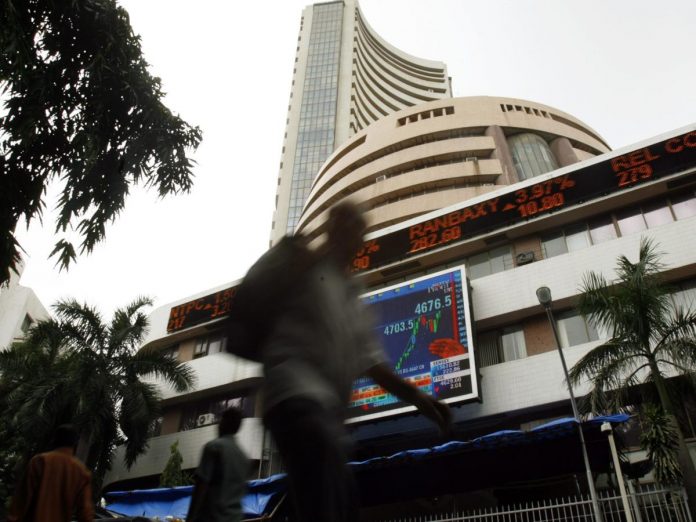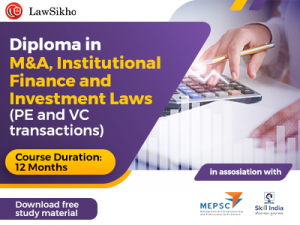
This article has been written by Ayushi Gupta, pursuing the Diploma Programme in M&A, Institutional Finance, and Investment Laws (PE and VC transactions) from LawSikho.
Table of Contents
Introduction
Impact investing has gained momentum in the last decade with the growing prominence of businesses in society. Impact investing is different from corporate social responsibility or socially responsible investing in the sense that it delineates investments that have the intention of achieving “measurable impact” along with financial returns. By developing a strong impact investment ecosystem, India can not only thrive in the social service delivery space but it can benefit from private sector efficiency and capital to realize its public sector goals. This new initiative ‘ the social stock exchange’ takes impact investing to a new level.
Social Stock Exchange (“SSE”) traces its origin in India to the Union Budget 2019-2020. The budget talked about empowering Medium Small and Micro Enterprises (“MSME”) and social enterprises via the creation of an SSE. This begs the question, what is an SSE? Social Stock Exchange simply refers to the electronic platform wherein social enterprises and other voluntary organizations (“NPOs”) can be listed in order to raise capital in the form of equity, debt, or through mutual funds. The concept of SSE comes at a time when governments all around the world have already shifted their focus to Environmental Social Governance (“ESG”) goals. Accordingly, in the year 2019, a working group was constituted under the aegis of Securities and Exchange Board of India (“SEBI”) that seeks to examine and suggest modalities to develop a framework for SSEs with possible structures to raise finance by social enterprises and voluntary organizations. With existing literature and data, it becomes imperative to consider if this new concept is a viable option for India.
Why is an SSE necessary?
In a survey conducted in 2018 on the ‘state of social enterprises in India’, British Council found that 57% of the Indian social enterprises suffer from a lack of access to debt or equity which poses a hurdle to their growth and sustainability. With India showing huge potential in the impact investment ecosystem, SEBI’s recent proposal to set up a social stock exchange is a much welcome step. However, there are several regulatory aspects that make it critical to examine social stock exchanges. This article discusses the challenges that arise in the creation and sustainability of SSEs and makes recommendations to improve the viability of SSEs.
SEBI’s hit and misses
The report defines social enterprises as an enterprise that is engaged in the business of ‘creating positive social impact’. It then goes on to suggest a minimum reporting standard by which social enterprises voluntarily submit a report and measure their intent to create social impact. This definition is vague and creates confusion in determining what a social enterprise is, thereby leaving it to organizations to decide who may take the risk of approaching an SSE without clarity on whether it is a social enterprise. There are a host of enterprises and organizations working in varied sectors having different organizational and governance structures delivering ‘social good’. Further, for-profit enterprises (“FPEs’ ‘) and NPOs need to be defined in order to prevent misuse. Thus, it becomes essential to define the contours of ‘social enterprise’ to create a uniform legal standard in order to distinguish between the enterprises that contribute towards social causes and an enterprise that does not. Additionally, whether the social enterprise includes Section 8 companies registered under the Companies Act, 2013 so as to be brought under the scope of SSE remains unanswered. This is because Section 8 includes voluntary organizations such as the Board of Cricket Control in India, the richest sports body in the world, which could very well come under the ambit of social enterprises.
The other important consideration in the present discourse is how social impact is determined. The report provides no guidance in this regard and leaves the term open for interpretation. Though the report recognizes social impact can be measured with the fledgling ecosystem which will take years to develop, it is pertinent to mention that measuring the social impact is challenging thus, SEBI needs to come up with a definite metric to measure social objectives.
The report also suggests tax incentives in the form of tax exemptions under the Income-Tax Act, 1961, and exemption from CSR funding. However, for claiming tax exemptions an NPO must be registered under Section 12A of the Income Tax Act. At present, there are fewer registered organizations that have actually claimed tax exemption status. It remains to be seen how those organizations will comply with the necessary reporting and listing requirements prescribed by the SSE. Additionally, social enterprise lacks the financial resources and the literacy to align with the objectives of SSE. SEBI also proposed the setting up of information repositories and social auditors to provide credible information with regard to social enterprises. The proposal seems significant for the capacity building of the SSEs. However, it remains to be seen how these ideas are executed and implemented.
The fundamental problem is also allocating SEBI the responsibility to govern the affairs of an SSE. It is not quite clear why the market regulator has been given the authority to regulate SSE given that the aim of SSE is to advance the social sector and bring in more capital. A separate organization with experts in social work would be far better suited as a regulator.
SSE falls under the realm of impact investing as described earlier. Therefore for an SSE to work effectively what is required from the government is policy support. At present, the literature on impact investing in India is limited. There remains uncertainty as to sectors and areas impact investors invest in and a number of impact investors present in India. Therefore, to ensure the success of the social stock exchange a robust and strong ecosystem needs to be constructed. Furthermore, active participation from the government is strongly needed. To conclude the SEBI recommendations highlight that it focuses more on developing the necessary ecosystem for the flow of capital for social causes rather than the functioning of an SSE. This seems to be inadequate under the present framework.
Recommendations
To operationalize SSEs and to ensure the success of the proposed institutional framework, it becomes necessary to address the shortcomings for the fair and transparent exchange to work. Following are our key recommendations:
Proper training and awareness should be carried out for the social enterprises to understand the workings of the SSE. Currently, social enterprises are not well equipped and lack resources to raise the desired capital. To make them investment-ready, emphasis should be laid on them initially as they are one of the main stakeholders for the present regime to work.
One of the critical elements in the working of SSE is the non-compliance by different stakeholders. It could be non-adherence to the listing guidelines by the social enterprises or the investors. Therefore, the authority regulating an SSE should take appropriate action against such violations. There should be specific penal provisions through which a certain amount of a fine can be levied or suspension of trading activity can be done.
Qualification for listing is another key concern related to SSEs, given the nature of the exchange which combines both the aspects i.e. social performance and financial returns. There is difficulty in developing the metric which can measure both elements. Thus, a system needs to be designed that can incorporate and measure the outcomes of social sector performance as well as financial gain.
The survey of Brookings India identified the non-availability of suitable exit options as a major hindrance to investment. Having exit options enables the investors to liquidate their position in a financial asset reducing potential risk. Lack of it means the investor will be cautious resulting in losses and lack of investment. As a solution, SSEs should offer flexibility in choosing a favorable exit.
SSEs would also have access to foreign investors triggering the applicability of the Foreign Contribution Regulation Act, 2010 (“Act”). Under the Act, voluntary organizations intending to receive foreign funding are required to obtain clearance from the Ministry of Home Affairs, Government of India. This begs the question; will the overseas funders be allowed to invest in social enterprises that do not have clearance? In the wake of the government’s stricter rules on voluntary organizations under the Act, foreign funding has been on the decline. This negatively affects the funding support limiting the amount of capital an SSE receives. The government should consider reducing the compliance burden and devise mechanisms so that foreign funding does not suffer a blow in the process of cracking down on voluntary organizations.
Conclusion
SSEs can play a significant role in leveraging the capital to meet the demands of beneficiaries and consumers towards the development of various social sectors – health, education, etc. In the existing landscape, it is quite imperative that SSE would need concrete steps in realizing its full potential to reach its goal of creating the social financial ecosystem in India. The approach taken by the market watchdog in identifying the essential features for the development of the ecosystem is laudable. The major stakeholders consisting of social enterprises, investors, independent regulatory bodies such as information depositories can play a pivotal role in achieving public sector goals only if they are well equipped with the different facets of the SSE. This is why educating different stakeholders must not be sidelined. This could include making them understand the financial model, processes and compliance, and regulatory requirements.
Encouragement from government entities is highly needed to promote and sustain an ecosystem conducive to impact investing. Given that the success of the present model at this phase is limited, the learnings from phase 1 should be used in other future phases and with multiple stakeholders to continuously improve the model. The author finds that social enterprises have been defined loosely and vaguely with a lack of standardization on measuring social impact. Therefore, the first step should be accepting standard indicators for impact measurement, listing norms. Building a strong repository of data of the social enterprises will be crucial to track and scrutinize their functioning to ensure the intended impact. However, proper coordination among major actors is crucial to building a comprehensive social program to attain Sustainable Development Goals (“SDGs”). These measures will work in the long run to develop a transparent model facilitating social capital in the desired public sectors.
References
- Centre for Social Impact and Philanthropy, Estimating Philanthropic Capital in India: Approaches and Challenges (2019), last accessed 6 May 2021.
- SEBI – Working Group Report on Social Stock Exchange (June 2020), available at: www.sebi.gov.in/reports-and-statistics/reports/jun-2020/report-of-the-working-group-on-social-stock-exchange_46751.html,, last accessed 6 May 2021.
- KPMG – Analysing the concept of Social Stock Exchange in India (July 2020), available at:assets.kpmg/content/dam/kpmg/in/pdf/2020/07/analysing-the-concept-of-social-stock-exchange-in-india.pdf, last accessed 6 May 2021.
- Ravi Shamika; Gustafsson-Wright, Emily; Sharma, Prerna; Boggild-Jones, Izzy, The Promise of Impact Investing In India, Brookings India (July 2019), available at: www.brookings.edu/wp-content/uploads/2019/07/The-promise-of-impact-investing-in-India.pdf, last accessed 6 May 2021.
- Budget 2019-2020, Speech of Nirmala Sitharaman, Minister of Finance (July 2019), available at: www.indiabudget.gov.in/budget2019-20/doc/Budget_Speech.pdf, last accessed 6 May 2021.
- Securities and Exchange Board of India, SEBI constitutes a working group on ‘Social Stock Exchanges’ (SSE), PR No. 21/2019 (September 2019), available at: www.sebi.gov.in/media/press-releases/sep-2019/sebi-constitutes-working-group-on-social-stock-exchanges-sse-_44311.html, last accessed 6 May 2021.
- British Council, The State of social enterprises in Bangladesh, Ghana, India, and Pakistan (2018), available at: www.britishcouncil.org/sites/default/files/bc-report-ch4-india-digital_0.pdf, last accessed 6 May 2021.
Students of LawSikho courses regularly produce writing assignments and work on practical exercises as a part of their coursework and develop themselves in real-life practical skills.
LawSikho has created a telegram group for exchanging legal knowledge, referrals, and various opportunities. You can click on this link and join:










